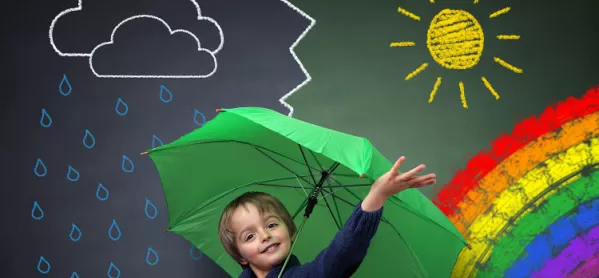How to use weather for learning in any primary subject
Learning about the weather isn’t just a requirement of geography lessons. In fact, understanding how weather forecasting works can help with understanding countless areas of the curriculum, from coding, maths and science to PSHE, literature and dance.
And in our modern world, where the climate crisis is becoming increasingly serious, being able to understand extreme weather is more relevant than ever. So where to begin?
Extreme weather
The Met Office has created a huge selection of weather-related resources, tailored to the needs of different ages and curriculum areas.
This extreme weather lesson, for example, takes pupils aged 7 to 11 through the various kinds of weather events seen around the world - from droughts to flooding and heatwaves to blizzards - and explores their effects on communities.
The lesson builds skills in a variety of areas, including analysis and verbal and written communication, as pupils research, create and present a poster that informs people in the local area about how to protect against an extreme weather event.
The pack also includes a really helpful teacher briefing note about climate change and the latest scientific thinking on how it increases the likelihood of extreme weather events.
This forecasting fact-busters lesson plan, also from the Met Office, explores the basics of how weather predictions are made and communicated, before delving into the skills needed to tell weather stories and how to identify fake news around the weather.
Students can build their literacy and language skills by analysing the tone and language used in weather stories from different media outlets, before working in groups to create reports of their own, which are then presented to other teams in the class, developing teamwork and public-speaking abilities.
Whizz-bang weather
If you want to bring a bit of whizz-bang weather to your classroom, try these hands-on activities from We Are Teachers, which include instructions on how to create lightning, conjure a tornado and grow a snowflake.
And with rising global temperatures never far from the news, you can also explore powerful PSHE ideas with this sun safety activity, where pupils build a sun shelter and test fabrics to see which lets the most sunshine in.
To bring a literacy focus to your lessons on weather, try these articles and reading comprehension tasks about the world’s longest lightning bolt. Twinkl has adapted both the article and exercises for students aged 7 to 9 and 9 to 11.
Poetry about the weather is also a rich topic. Children’s author Nicola Davies teamed up with climate scientist Professor Ed Hawkins from the National Centre for Atmospheric Science and the University of Reading to look at extreme weather.
One of the resulting pieces, Like a Circle Like a Spiral, is recited over data visualisations of annual temperature increases, while The Ben Nevis Weather Watchers is set to interesting pictures of the observatory, which was built in 1883.
If you would like to delve a little more into the historical elements of the Ben Nevis Observatory - including the fascinating tale of Clement Wragge and his dog Renzo - there is a useful case study sheet (with suggested activities) and a photograph gallery, both from the Royal Meteorological Society.
The D-Day landing is a great example of just how important accurate weather prediction and communication is. This lesson from the Met Office explores the critical work of James Stagg, chief meteorologist to General Eisenhower, and how he used observation charts to predict a “weather window” on Tuesday 6 June 1944 that would allow allied forces to invade Normandy.
The history-focused lesson also brings in computing skills as it explores Stagg’s work on coding and encryption, and invites pupils to decode D-Day weather observations from the Met Office using a cipher wheel. It rounds off with a class discussion about the weather at 7am on D-Day, based on their decoded observations.
If the story of Stagg’s work inspires the future meteorologists in your class, this PSHE-based lesson on weather heroes is a great next step.
It includes a film about careers in weather and climate, a discussion about pupils’ dream jobs and exploring how weather is important to many types of roles - from pilots to architects, lorry drivers and hospital administrators. Pupils are then tasked to create a skills profile for these jobs.
Kate Hodge is a freelance education writer

